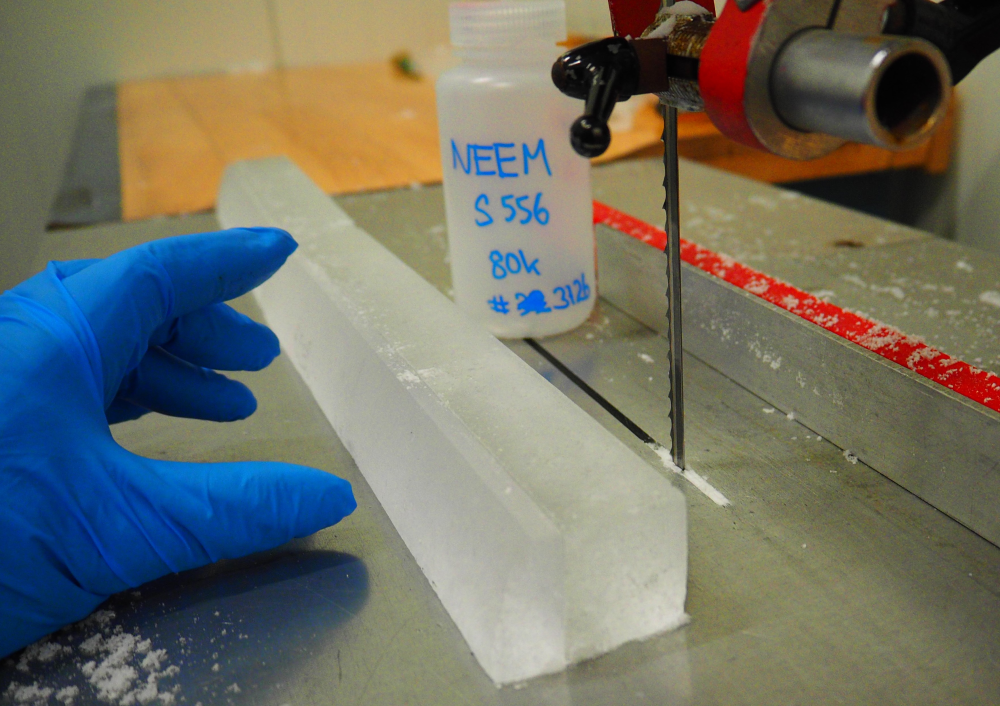A volcano erupted in Central America tens of thousands of years ago, creating an explosion so enormous that scientists believed it triggered prolonged enough global cooling to kick off an ice age. Known today as the Los Chocoyos supereruption, it was one of the largest of the Quaternary period, but a new study looking at ancient ice cores paints a very different picture of what came next.
ADVERTISEMENT
Ice core samples enable us to investigate the ancient climate record because they lock in deposits that can be tested and measured, including volcanic ash. A team of scientists at the University of St Andrews set out to use ice cores from Greenland and Antarctica as a way of determining a more precise date for when the Los Chocoyos supereruption occurred, and used their findings to reconstruct the climate consequences that followed.
This ongoing research is essential if we want to develop the best possible insight into how future, explosive eruptions might impact global climate, environment and societies.
Dr Helen Innes
Supereruptions are defined by their explosive potential, leaving in their wake a large crater-like depression called a caldera. Only a handful have occurred in the last 100,000 years, and none in recorded history.
They’re of global significance because of their potential to pump vast amounts of gases into the upper atmosphere. These deposits can be used as markers when studying ice cores as they can include microscopic ash particles, known as tephra, and peaks in volcanic sulfate. By searching for the geochemical fingerprint of the Los Chocoyos supereruption of Guatemala’s Atitlán volcanic system in the polar ice cores, the team were able to determine that the event occurred around 79,500 years ago.

Polar ice cores trap ancient deposits that can tell us about Earth’s past.
Image credit: Michael Sigl
Those same ice cores hold a detailed record of the environment, and what they revealed was that although the supereruption was followed by catastrophic short-term changes to global climate systems, this didn’t continue at a centennial- or millennial-scale. Instead, the planet bounced back to its pre-eruption conditions within a matter of decades.
This drastically reshapes our understanding of what followed the Los Chocoyos event, and raises questions about the climate-tipping potential of supereruptions throughout history.
ADVERTISEMENT
“Over the past decades, there has been debate about the impact that supereruptions have on global climate, in particular whether they could contribute to the onset of cold, ice-age conditions,” said study lead author Helen Innes to IFLScience. “Our evidence that the climate returned to pre-eruption conditions in the years-to-decades that followed this catastrophic volcanic sulfate emission is an exciting step forward for our understanding of volcanism-climate interactions.”
Even without triggering an ice age, a supereruption is enough to make you nervous, but the good news is that the University of St Andrews state the chance of such an eruption occurring in the next century sits at around 0.12 percent. Phew.
In the meantime, Innes intends to dive deeper into our planet’s volcanic history by studying fire through ice.
ADVERTISEMENT
“Polar ice cores provide one of, if not the most valuable, resources to understand more about the link between volcanism and climate,” added Innes. “My current research continues to use this resource to reconstruct volcanic histories, targeting the largest sulfate emissions preserved in ice cores, or periods of time where links have been suggested between eruptions and widespread climate cooling.”
“This ongoing research is essential if we want to develop the best possible insight into how future, explosive eruptions might impact global climate, environment and societies.”
The study is published in the journal Communications Earth & Environment.
Source Link: One Of Earth’s Largest Known Supereruptions Dramatically Altered The Climate 79,500 Years Ago